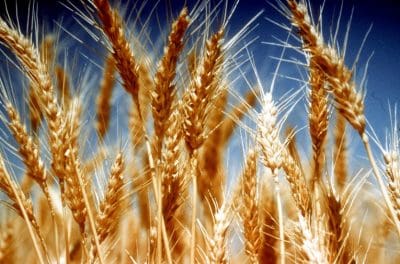THERE’S no silver bullet on the horizon for the Australian grain industry with revenues forecast to fall 5.5 per cent during 2016-17 to $13.3 billion, according to the latest market research report from IBISWorld.
 Local prices for barley and wheat are forecast to fall 25.8pc and 15.6pc, respectively, during the year in line with falling global prices, with the world wheat indicator price expected to decrease 13.8pc in 2016-17.
Local prices for barley and wheat are forecast to fall 25.8pc and 15.6pc, respectively, during the year in line with falling global prices, with the world wheat indicator price expected to decrease 13.8pc in 2016-17.
“Record world stocks of many grains, caused by favourable growing conditions in many key grain producing countries (such as Canada and Russia) have created excess global supply, which is likely to place sharp downward pressure on grain prices during the year,” IBISWorld senior industry analyst, Nathan Cloutman, said.
“Improved rainfall and soil moisture retention in local growing regions are anticipated to boost local grain production. For example, the Australian Bureau of Agricultural and Resource Economics and Sciences (ABARES) expects that barley production will jump 23.9pc and wheat production will increase 34.9pc during 2016-17.
“Excess local supply is expected to place further downward pressure on prices. Consequently, revenue for the grain growing industry is projected to fall during the year.”
Prices forecast to fall
According to ABARES, all major grain crop prices are forecast to contract sharply during 2016-17.
Barley prices are projected to fall 25.8pc, wheat prices are forecast to fall 15.6pc, oat prices are projected to fall 15.7pc and grain sorghum prices are forecast to fall 19.0pc.
In comparison, canola prices are forecast to fall only 1.5pc during 2016-17, although corn prices are expected to decrease 7.1pc.
…..harvest volumes (are) not likely to be high enough to prevent revenue declines.
As farmers wrap up the harvest of a record winter crop in many regions of Australia, IBISWorld senior industry analyst, Brooke Tonkin, said the increase in production of barley and wheat during 2016-17 would help alleviate pressures caused by low prices.
“However, returns for barley and grain sorghum are expected to contract during 2016-17, with harvest volumes not likely to be high enough to prevent revenue declines,” she said.
“IBISWorld expects this to contribute to revenue declines across the industry during 2016-17. Despite this, profit margins across the industry are expected to be about 12.5pc, boding well for grain growers.”
Revenue volatility
Over the past five years the grain industry has sustained moderate revenue volatility, largely influenced by adverse weather conditions that have affected local supply.
Fluctuations in global grain prices and crop supplies over the past five years have contributed to this revenue volatility.
Ms Tonkin said the grain growing industry had performed modestly relative to horticultural industries, with revenue forecast to grow at a compound annual rate of 1.4pc over the five years through 2016-17.
However, this figure did not demonstrate revenue volatility over the period, with revenue movements ranging between 11.7pc growth and the 5.5pc decline anticipated in 2016-17.
Industry comparison
Ms Tonkin said, comparatively, the grain growing industry was expected to perform more strongly than the rice and cotton industries, which were forecast to contract at a compound annual rate of 11.7pc and 9.4pc respectively over the five years through 2016-17.
However, grain growers are expected to fare worse than their counterparts in the hay and ‘other crop growing’ industries, and the citrus, banana and ‘other fruit growing’ industries, which were forecast to grow at a compound annual rate of 7.6pc and 4.4pc respectively over the period.
Global wheat stocks
Meanwhile, the latest United States Department of Agriculture (USDA) report indicates global wheat ending stocks have reached a record 253.3 million tons (MT).
Global coarse grain production for 2016/17 is forecast to be 1327.7MT.
In the US, oilseed production for 2016/17 is estimated at 127.3MT, down 1.5MT from last month. Lower soybean and peanut production is partly offset with higher canola, sunflower seed, and cotton seed crops.
The US 2016/17 cotton outlook shows larger production, exports, and ending stocks relative to last month. Production estimates have been raised to nearly 17.0 million bales, due mainly to higher production in Texas.
The USDA report projects that world ending stocks for cotton will be 90.6 million bales.
Source: IBISWorld and USDA

HAVE YOUR SAY